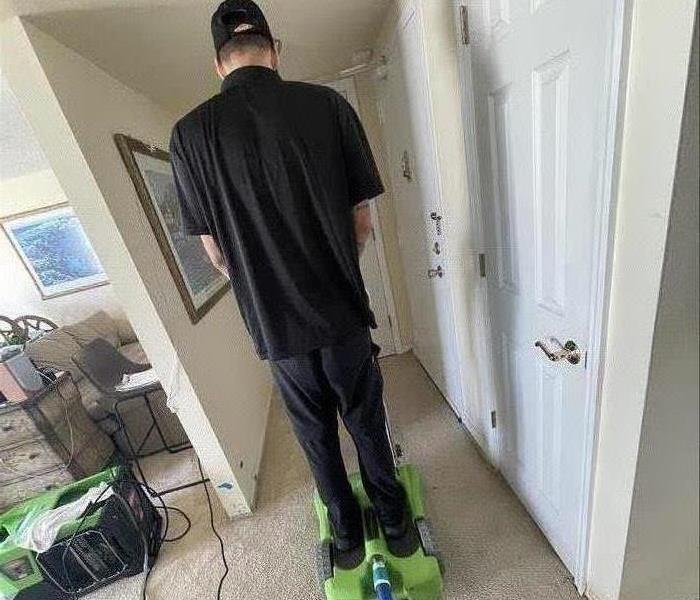What to Do When A Pipe Burst
6/12/2024 (Permalink)
Burst pipes are a common and potentially damaging issue for homeowners, especially during the colder months. When faced with this emergency situation, it's important to act quickly to minimize damage to your property and belongings. In this guide, we'll outline the steps you should take to respond to burst pipes effectively.
Turn Off the Water Supply
The first step when dealing with burst pipes is to shut off the main water supply to your home. This will help prevent further flooding and minimize water damage. Locate the main shut-off valve, usually located near the water meter or where the main water line enters your home, and turn it clockwise to shut off the water.
Assess the Damage
Once you've turned off the water supply, assess the extent of the damage caused by the burst pipes. Look for signs of water damage, such as wet or swollen walls, ceilings, and floors, as well as any standing water. Take note of any areas that have been affected to help guide the cleanup and restoration process.
Remove Standing Water
If there is standing water in your home, begin removing it as quickly as possible to prevent further damage. Use towels, mops, or a wet/dry vacuum to soak up excess water from floors and surfaces. Open windows and doors to promote airflow and aid in the drying process.
Call a Professional Restoration Company
After addressing immediate concerns like shutting off the water and removing standing water, it's crucial to enlist the help of a professional restoration company like SERVPRO®. Experienced professionals have the knowledge, expertise, and equipment to assess the extent of the damage, mitigate further damage, and begin the restoration process promptly.
Document the Damage
Before beginning any cleanup or repairs, document the damage caused by the burst pipes. Take photos and videos of the affected areas, including any visible damage to walls, floors, and belongings. This documentation will be essential when filing insurance claims and working with restoration professionals.
Begin Drying Out the Area
Once the water has been removed, begin drying out the affected areas to prevent mold and further damage. Use fans, dehumidifiers, and air movers to circulate air and promote evaporation. Focus on thoroughly drying out walls, floors, and other surfaces to prevent moisture from lingering.
Address Any Structural Damage
In some cases, burst pipes can cause structural damage to your home. If you notice any signs of structural damage, such as sagging ceilings or warped floors, it's essential to address these issues promptly. Consult with a professional contractor to assess the damage and determine the necessary repairs.
Monitor for Mold Growth
Even after the cleanup and restoration process is complete, it's essential to monitor the affected areas for signs of mold growth. Keep an eye out for musty odors, discolored patches on walls or ceilings, or visible mold growth. If mold is present, take steps to address it promptly to prevent further damage and health risks.
Responding to burst pipes requires swift action and careful attention to detail. By following these steps and enlisting the help of professionals like SERVPRO of Downtown Orlando/Team Nicholson, you can effectively mitigate damage, restore your home, and get back to normal as quickly as possible.

 24/7 Emergency Service
24/7 Emergency Service
